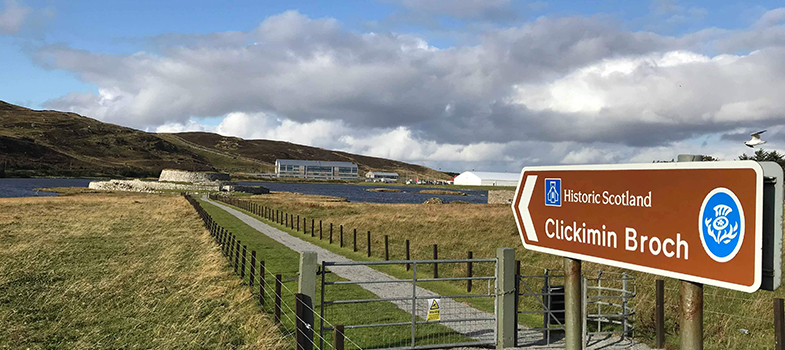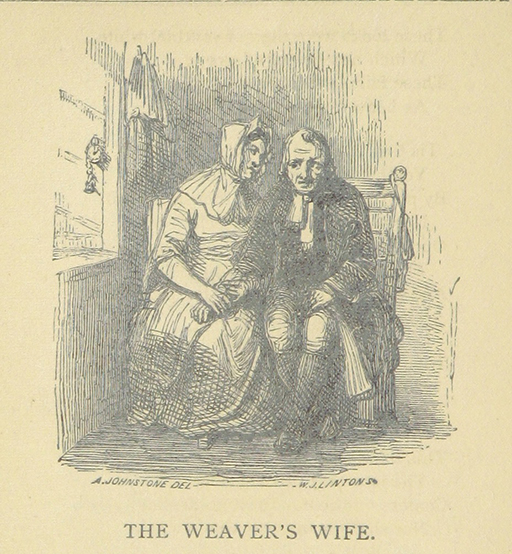12.2 Scots song collecting over the centuries
In starting to consider the Scots song tradition, it is vital to understand from the outset that songs have been collected in a number of different ways over the past few centuries up to the present day. They have been collated, classified and presented in a variety of forms as technology has changed.
Most commonly, Scots songs would be published in print, although the tension between the ‘oral’ and print versions was already apparent around 1800. A number of problems arose when printing songs in written form, that came from the oral tradition in the non-standardised language of Scots.
A telling example of these problems, which go well beyond finding the ‘right spelling’, is that of Margaret Laidlaw’s songs published in a collection of songs Minstrelsy of the Scottish Border was compiled and edited by Sir Walter Scott (1771–1832).
Activity 4
In this activity, you will be engaging with a much-quoted condemnation of the methods used in publishing songs in the Minstrelsy. The famous complaint came from James Hogg [Tip: hold Ctrl and click a link to open it in a new tab. (Hide tip)] , the Ettrick Shepherd’s mother, Margaret Laidlaw, who reproached Sir Walter Scott, who had come to collect a ballad from her.
Part 2
In this part of the activity, you will again practise your spoken Scots by saying Margaret Laidlaw’s words yourself and comparing your pronunciation with our model.
Transcript
Listen
There war never ane o’ my sangs prentit till ye prentit them yoursel’, and ye hae spoilt them awthegither. They were made for singin’ an’ no for readin’; but ye hae broken them charm noo, and they’ll never (be) sung mair. An’ the worst thing of a’ they’re nouther richt spell’d nor richt setten down.
Model
There war never ane o’ my sangs prentit till ye prentit them yoursel’, and ye hae spoilt them awthegither. They were made for singin’ an’ no for readin’; but ye hae broken them charm noo, and they’ll never (be) sung mair. An’ the worst thing of a’ they’re nouther richt spell’d nor richt setten down.
It does not come as a surprise to read Margaret Laidlaw’s angry words, when we consider how Sir Walter Scott approached publishing the songs in his Minstrelsy.
Scott acquired his ballads from a number of sources. Some he knew from his own family, having spent part of his childhood living with extended family in Sandyknowe in Roxburghshire (Hewitt, David, ‘Scott, Sir Walter (1771–1832)’, Oxford Dictionary of National Biography, Oxford University Press, 2004; online edn, May 2008). He went on collecting tours of the Borders between 1792 and 1801 to acquire songs from locals.
During this time he was introduced to William Laidlaw, James Hogg, and John Leyden, all of whom contributed material to the Minstrelsy, though more so in later editions (Lang, Andrew, Sir Walter Scott and the Border Minstrelsy (London 1910); Hewitt, David, ‘Scott, Sir Walter (1771–1832)’, Oxford Dictionary of National Biography, Oxford University Press, 2004; online edn, May 2008). He also took many ballads from manuscript sources, such as those of David Herd (Campbell, Katherine, ‘Collectors of Scots Song’ in Oral Literature and Performance Culture, ed. John Beech, Owen Hand, Fiona MacDonald, Mark A. Mulhern and Jeremy Weston (Edinburgh 2007)).
For all his good intentions, Scott and the Minstrelsy have been subject to criticism from the beginning. One major area of contention is Scott’s approach to editing. He did not print the ballads faithfully word for word as sung or recited to him. Instead, he tended to tidy them up for publication, adding lines or stanzas here or there. He also combined different versions of the same ballad, choosing which parts of each version he thought best (Lang, Andrew, Sir Walter Scott and the Border Minstrelsy (London 1910); Hewitt, David, ‘Scott, Sir Walter (1771–1832)’, Oxford Dictionary of National Biography, Oxford University Press, 2004; online edn, May 2008). Scott made no secret of his editorial approach. In the introduction to the first volume, he writes:
‘No liberties have been taken either with the recited or written copies of these ballads, farther than that, where they disagreed, the editor, in justice to the author, has uniformly preserved what seemed to him the best or most poetical reading of the passage… Some arrangement was also occasionally necessary to recover the rhyme, which was often, by the ignorance of the reciters, transposed or thrown into the middle of the line.
With these freedoms, which were essentially necessary to remove obvious corruptions, and fit the ballads for the press, the editor presents them to the public, under the complete assurance, that they carry with them the most indisputable marks of their authenticity.’ (pp. cii-ciii)
The concept of ‘authenticity’ has always been problematic for antiquarians and ethnographers. Translating oral culture, and particularly music, to print is fraught with technical and interpretative issues. Words are not always fixed in oral traditions and Scottish traditional music does not fit well into classical musical notation. Modern scholars would certainly not see Scott’s approach as preserving authenticity and would record every version of a piece as found, with all inconsistencies and ‘corruptions’ intact.
And, last but not least, there was a major flaw in Scott’s collection, as he did not record the music together with the words of the songs, thus making them appear as poems rather than songs and losing their musicality.
While there were countless collectors down through the centuries, some of the most famous printed collections include – David Herd’s Ancient and Modern Scottish Songs from 1769; The Scots Musical Museum (6 vols, 1787–1803) by James Johnson and Robert Burns; Francis James Child’s English and Scottish Popular Ballads (5 vols, 1882-1898); and The Greig-Duncan Folk Song Collection (8 vols, 1981–2002, but collected 1902–1914).
Francis James Child’s collection – prepared from print and manuscript sources from his base at Harvard in the United States, rather than his own field collecting – categorised classic ballad texts into a classification of 305 types that are known today as the ‘Child’ ballads, and each has an identifying number attached, e.g. Sir Patrick Spens is Child ballad number 58.
An important point to note is that the vast majority of collections (as well as broadsides and chapbooks) were originally published without tunes, in other words text only, with the notable exception of the Scots Musical Museum. This was either because of the prohibitive cost of setting music for print, or the fact that it was assumed many of the tunes were already well-known. As such, tune names would often be given alongside. In the 20th century, the Greig-Duncan collection was published with musical notation, and Child’s collection was expanded by Bertrand Bronson’s Traditional Tunes of the Child Ballads published from 1959-1972.
From 1902-1914, schoolmaster Gavin Greig and minister Rev James B. Duncan collected songs around their native Aberdeenshire and also partly through correspondence. This resulted in a large collection of over 3,000 song versions, which is housed at the University of Aberdeen. The collection was eventually published in the late 20th century in collaboration with the School of Scottish Studies at the University of Edinburgh, in eight volumes from 1981-2002.
The School of Scottish Studies had been co-founded by, amongst others, folklorist and poet Hamish Henderson in 1951, spurred on by the work of the Irish Folklore Commission in Ireland and the collecting of American folklorist Alan Lomax, who visited Scotland in 1951. It has collected around 12,000 hours of folklore field recordings, many of which are now available online through the trilingual Tobar an Dualchais / Kist o Riches / Well of Heritage project. Similar fieldwork recording has been done in recent decades by the Elphinstone Institute at the University of Aberdeen.
Key aspects of collecting Scots song 
In this activity, which does not have a model answer, take a note of the key aspects of collecting Scots song over the centuries, which you have come across in this section. This can be names of famous collectors and collections or problematic features of collecting Scots song.
12.1 Oral vs printed tradition

